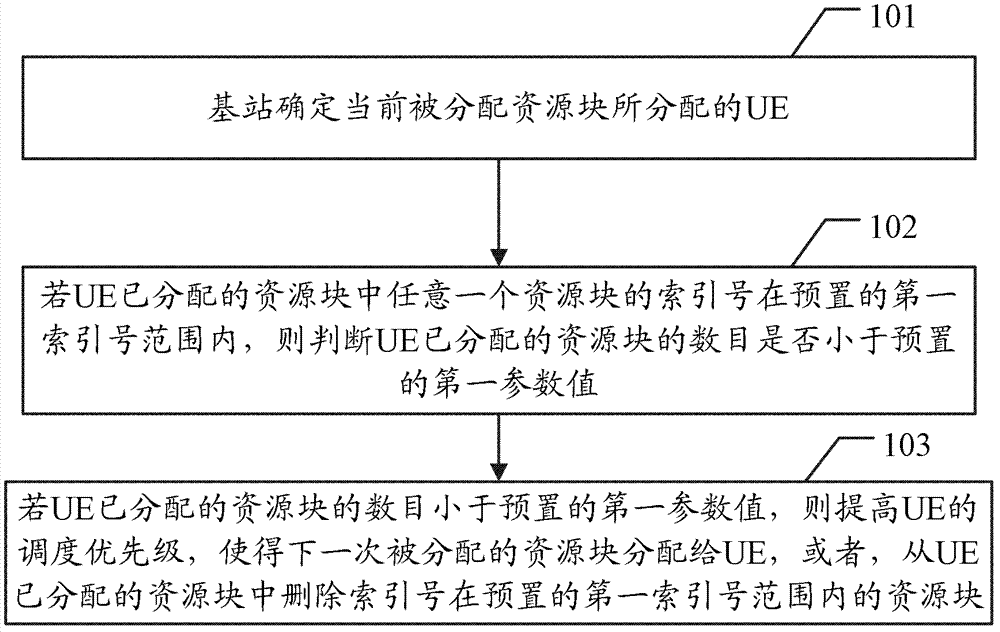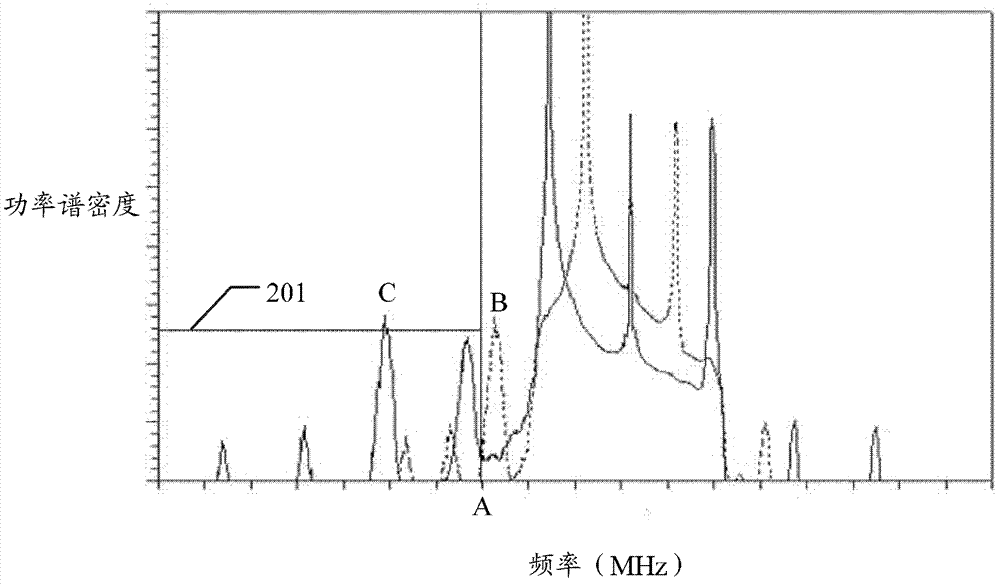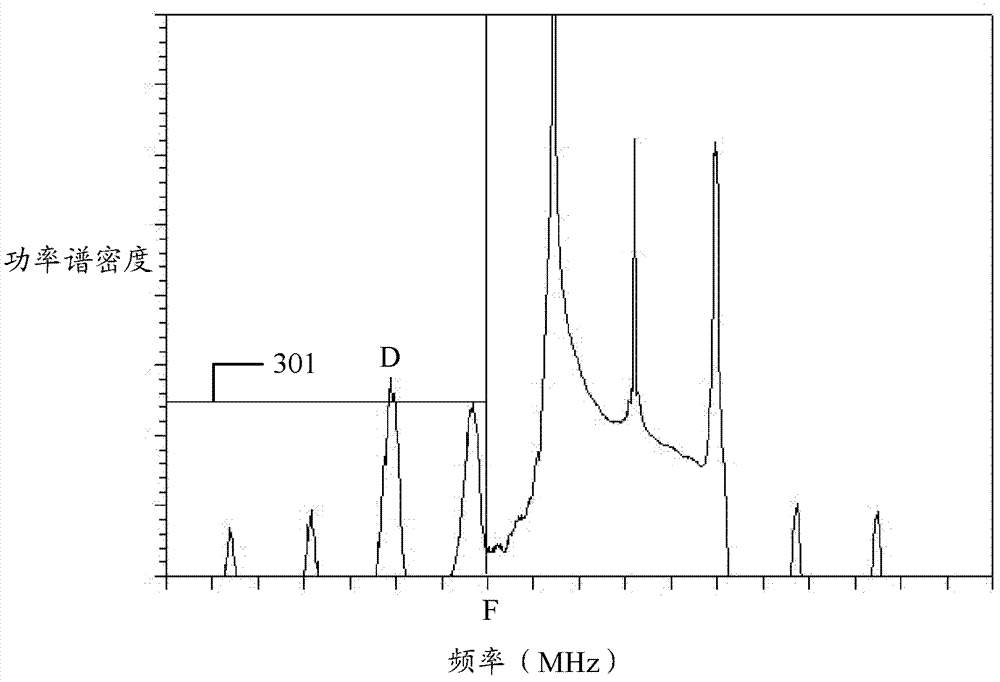Method and station of resource distribution
A technology of resource allocation and base station, applied in the field of resource allocation, method and base station, can solve the problems of large impact of network planning, small implementability, loss of UE receiving sensitivity, etc., and achieve the effect of reducing out-of-band radiation power spectral density
- Summary
- Abstract
- Description
- Claims
- Application Information
AI Technical Summary
Problems solved by technology
Method used
Image
Examples
Embodiment Construction
[0037] Embodiments of the present invention provide a resource allocation method and a base station, which are used for the base station to allocate resources to UEs, so that the out-of-band radiation power of the UE is reduced, and the requirements of the system on the out-of-band radiation power of the UE are met.
[0038] see figure 1 , is an embodiment of a resource allocation method in the embodiment of the present invention, including:
[0039] 101. The base station determines the UE allocated by the currently allocated resource block;
[0040] In the embodiment of the present invention, the base station divides bandwidth resources into resource blocks, sets index numbers for the resource blocks in order, and allocates the resource blocks to UEs in ascending order of index numbers, and the index of the resource blocks after the base station divides The number can be as follows:
[0041]
[0042] Wherein, "#" represents the index number of the resource block, and #1 ...
PUM
 Login to View More
Login to View More Abstract
Description
Claims
Application Information
 Login to View More
Login to View More - R&D
- Intellectual Property
- Life Sciences
- Materials
- Tech Scout
- Unparalleled Data Quality
- Higher Quality Content
- 60% Fewer Hallucinations
Browse by: Latest US Patents, China's latest patents, Technical Efficacy Thesaurus, Application Domain, Technology Topic, Popular Technical Reports.
© 2025 PatSnap. All rights reserved.Legal|Privacy policy|Modern Slavery Act Transparency Statement|Sitemap|About US| Contact US: help@patsnap.com



